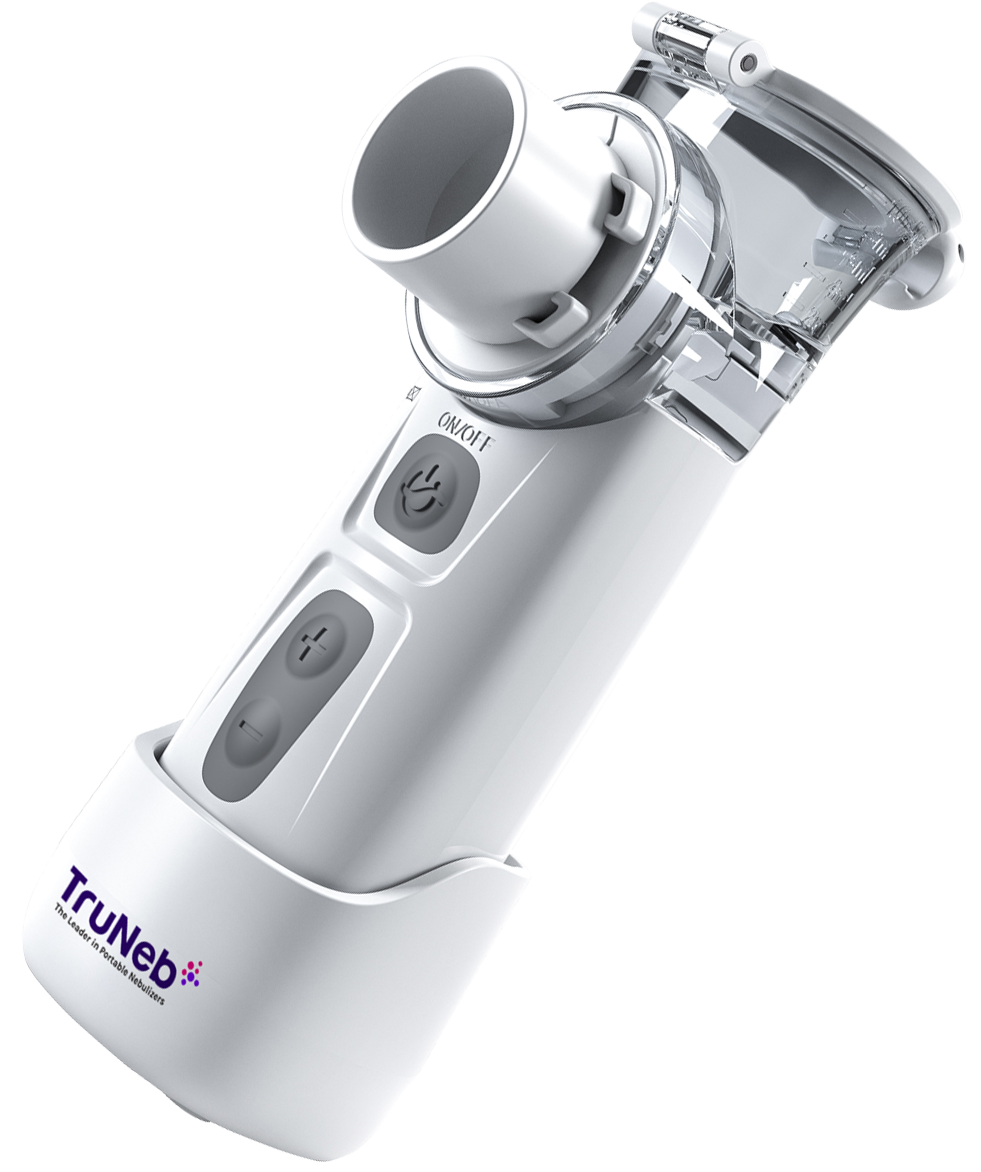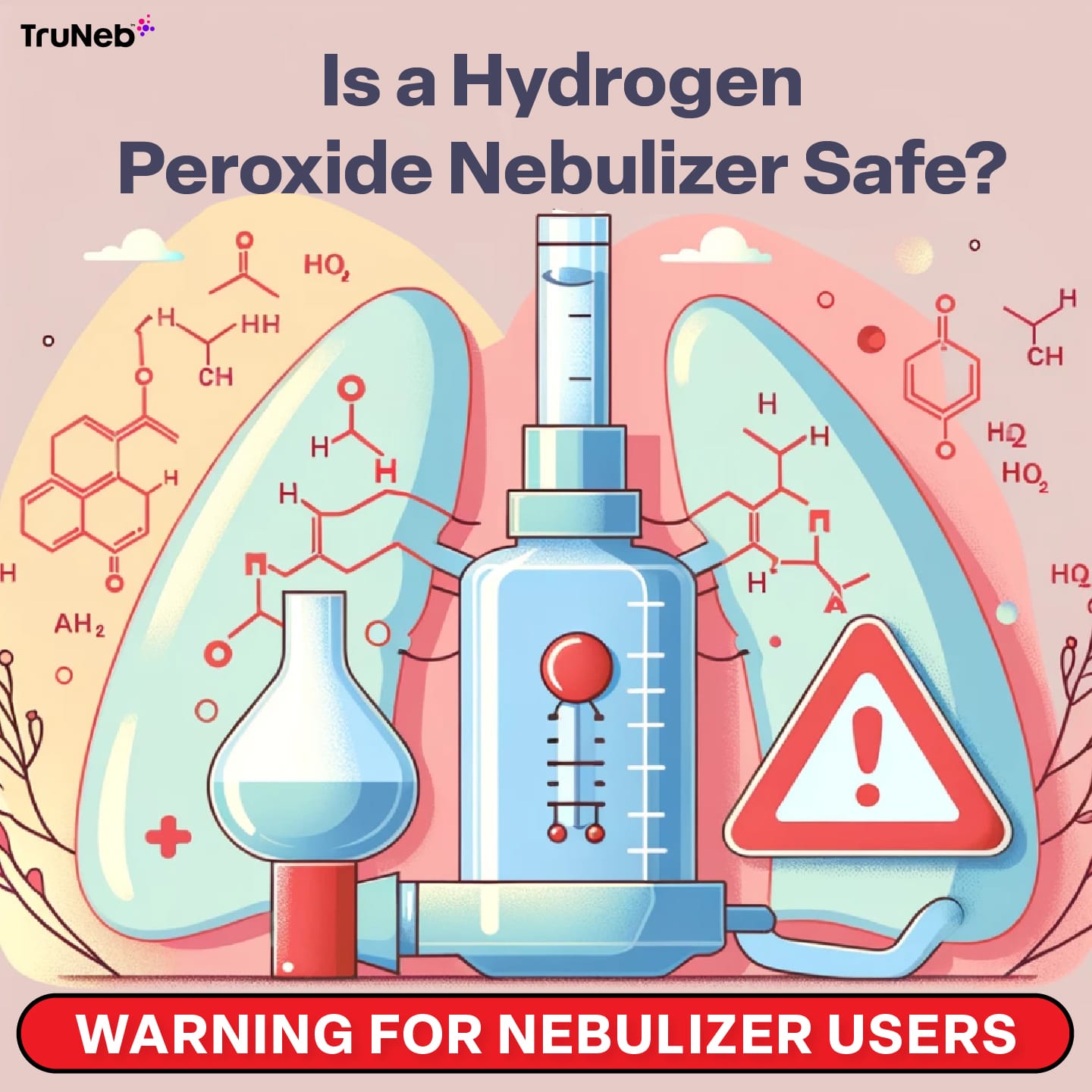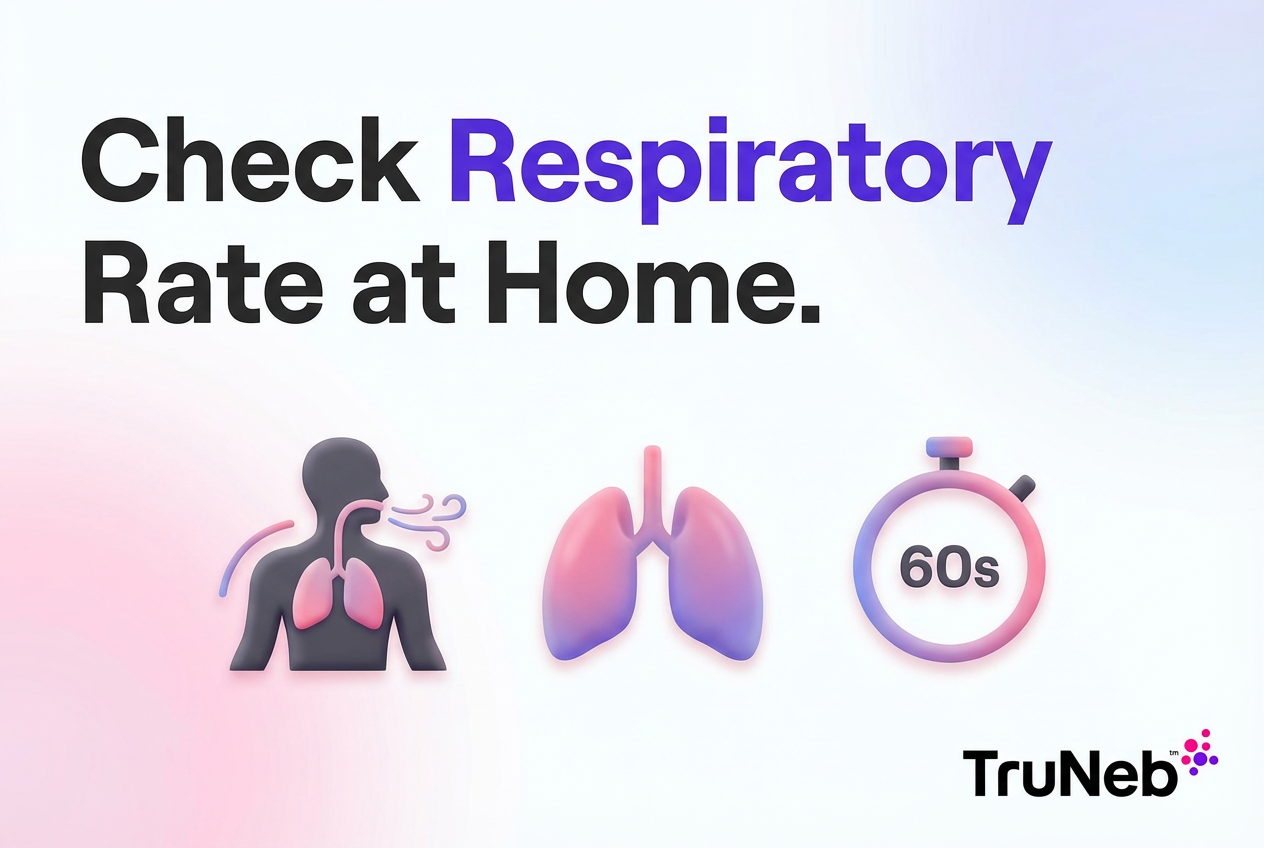On this page

Chronic Obstructive Pulmonary Disease (COPD) is a serious respiratory condition that affects millions of people worldwide. As a progressive disease that makes breathing more and more difficult, COPD can have a major impact on quality of life. Is COPD contagious? Despite how serious it is, no–COPD is NOT contagious. However, secondary infections that can develop might be contagious.
Understanding COPD and what causes it is helpful for both patients and their loved ones, to help better manage the condition and make informed decisions. This article will take a deep dive into the disease and everything you need to know.
What Is COPD?
COPD is an umbrella term that covers two main conditions: chronic bronchitis and emphysema. These conditions can exist together or alone. They cause persistent respiratory symptoms like difficulty breathing, coughing, and wheezing. The World Health Organization says Chronic Obstructive Pulmonary Disease is the third leading cause of death worldwide, making it a serious public health issue across the globe.
Chronic Bronchitis
Chronic bronchitis is a disease marked by long-term inflammation of the bronchi (the airways in the lungs). This ongoing inflammation leads to more mucus production and a persistent cough. People with chronic bronchitis are sometimes called the nickname “blue bloater” because of bluish discoloration of the skin and lips from lower oxygen in the blood.
Emphysema
On the other hand, emphysema involves damage to the alveoli, the tiny air sacs in the lungs where oxygen and carbon dioxide gas exchange takes place. As the alveoli become damaged, the lungs lose their elasticity, and it becomes harder to breathe. People with emphysema generally don't have excess mucus like those with chronic bronchitis.
How Common Is COPD?
Nearly 14.2 million Americans suffer with COPD, with more women dying from the condition compared to men. That's around 6% of adults in the United States! Worldwide, it's estimated that by 2050, 600 million adults will be diagnosed with COPD, a whopping 23% increase from 2020.
Causes and Risk Factors
Smoking: The Primary Cause
Smoking is the primary cause of COPD and is responsible for about 80% of all cases. The harmful chemicals in cigarette smoke irritate and inflame the lungs, leading to chronic bronchitis and emphysema over time. The risk of developing COPD increases the more someone smokes.
Healthcare professionals calculate this number in "pack years". You can calculate pack years with this equation:
Number of packs smoked per day x Number of years smoked
It's not a foolproof way to determine health outcomes, but there is a correlation with COPD, lung cancer, and heart disease the higher the number is.
Quitting smoking at any stage can slow the progression of the disease and improve overall health. It's never too late.
Other Lung Irritants
Exposure to other lung irritants can also put you at risk for COPD. Secondhand smoke, air pollution, and chemical fumes from the environment or workplace can all cause lung damage. People who work in industries like mining, construction, and manufacturing may be at a higher risk of developing COPD because of exposure to dust, fumes, and other airborne particles.
Genetic Factors
Genetic factors can also play a role in COPD. Alpha-1 antitrypsin deficiency (AATD) is a rare genetic disorder that affects the lungs and liver. People with AATD have low levels of a protein called alpha-1 antitrypsin, which helps protect the lungs from harm. Without enough of this protein, the lungs are more susceptible to damage from irritants like cigarette smoke, leading to an increased risk of developing COPD.
Nobody knows why one person might smoke for decades and develop severe COPD while someone else might only have mild sporadic lung symptoms. Genetics are thought to play a role in how the disease affects one person vs. another.
Age and Asthma
Age is another risk factor for COPD. The disease is most commonly diagnosed in people over the age of 40, since the lungs naturally lose some of their elasticity and function as we age. Having asthma can increase the risk of COPD, especially if it's not well-controlled or if the person smokes.
Is COPD Contagious?
COPD Is Not Contagious
Despite the seriousness of COPD, the disease itself is NOT contagious. You can't catch COPD from someone else, nor can you pass it on to others. COPD is a chronic condition that develops over time from a combination of genetic and environmental factors. The main reason someone develops COPD is smoking.
How COPD Develops Over Time
COPD is a progressive disease, meaning that it will worsen over time. The damage caused to the airways and air sacs by smoking and other irritants happens gradually. In the early stages of COPD, symptoms can be mild and may not even really impact daily life. As the disease progresses, symptoms like shortness of breath, chronic cough, and fatigue can become more debilitating.
Risk of Transmitting Other Infections Through Coughing
Even though COPD itself is not contagious, people with the condition are more susceptible to respiratory infections like pneumonia and influenza. These infections can be more severe for COPDers and can lead to exacerbations. Exacerbations are flare-ups of the disease (and often mean hospitalization).
If a person with COPD coughs or sneezes while they have another illness, they can spread these infections to others. Coughing into the arm and good hand hygiene helps prevents the spread of droplets and germs.
Symptoms of COPD
Here are some of the most common symptoms of COPD:
Chronic Cough
A common symptom of COPD is a chronic cough that lasts for several months or even years. This cough is often productive, meaning that it brings up mucus from the lungs. The mucus can be clear, white, yellow, or greenish in color. The cough may be worse in the morning or during exercise.
Shortness of Breath
Shortness of breath, also known as dyspnea, is another hallmark symptom of COPD. People with COPD may experience difficulty breathing, especially during exertion or exercise. As the disease progresses, shortness of breath can occur even during rest. This can make it challenging to perform everyday activities like walking, climbing stairs, or doing household chores.
Wheezing and Chest Tightness
COPD can cause wheezing, which is a high-pitched whistling sound in the lungs when breathing (typically during exhalation). This is because narrowing of the airways makes it hard to breathe out. Chest tightness is another common symptom, which can make it feel like there is a weight or pressure on the chest. These symptoms can be difficult to deal with during physical activity or when exposed to triggers like cold air or pollution.
Frequent Respiratory Infections
COPDers are more susceptible to lung infections including pneumonia and influenza. Lung infections can cause worsening COPD symptoms and exacerbations.
How Is COPD Diagnosed?
There are several ways doctors assess patients for COPD including the following diagnostic tests:
Spirometry Test
The most common test used to diagnose COPD is spirometry – also known as a pulmonary function test (PFT). This test measures how much air a person can breathe out and how quickly they can do so. During the test, the patient takes a deep breath and then blows into a mouthpiece attached to a machine called a spirometer. The spirometer measures the amount of air exhaled and the speed of exhalation. A reduced ratio of forced expiratory volume in one second (FEV1) to forced vital capacity (FVC) indicates the presence of airflow obstruction, a key sign of COPD.
Chest X-ray and CT Scan
Imaging tests like chest X-rays and computed tomography (CT) scans are used to assess the severity of COPD and to rule out other lung conditions. These tests can show emphysema, (the destruction of the air sacs in the lungs), and other abnormalities like lung nodules or masses.
Arterial Blood Gas Analysis
An arterial blood gas (ABG) analysis is a test that measures the levels of oxygen and carbon dioxide in the blood. This test helps determine the severity of COPD and can guide treatment decisions. In severe COPD, oxygen levels in the blood may be low, while carbon dioxide levels can be high. Other numbers like the PH and HCO3 (bicarb) can show if a person has a chronic condition.
GOLD Classification (Stages 1-4)
The Global Initiative for Chronic Obstructive Lung Disease (GOLD) has developed a classification system for COPD based on the severity of airflow obstruction. The stages range from mild (Stage 1) to very severe (Stage 4) and are determined by the results of spirometry testing. The GOLD classification can help guide treatment decisions and predict outcomes in people with COPD.
Is COPD Curable?
No, unfortunately COPD is not curable. But effective management and prevention of exacerbations is critical to maintaining a high quality of life.
Here are the top treatments and preventative measures to take if you have Chronic Obstructive Pulmonary Disease:
Quitting Smoking
Priority #1 in preventing and managing COPD is to quit smoking. Quitting smoking can slow the progression of the disease and improve symptoms – even if someone has been smoking for a long time. There are so many resources available to help people quit smoking, including nicotine replacement therapy, prescription medications, and support groups.
Avoiding Lung Irritants
Avoiding exposure to lung irritants like secondhand smoke, air pollution, and occupational hazards all help. This may involve making lifestyle changes, but ultimately these changes are for the best!
Vaccinations
People with COPD have a higher risk of respiratory infections, which can lead to exacerbations and severe symptoms. Vaccinations like the annual flu shot and the pneumococcal vaccine offer excellent protection. The newer RSV vaccine is also recommended for older adults.
Bronchodilators and Corticosteroids
Bronchodilators are medications that help relax and open the airways, making it easier to breathe. There are two main types of bronchodilators: short-acting and long-acting. Short-acting bronchodilators (like albuterol) are used for quick relief of symptoms, while long-acting bronchodilators (arformoterol) are used for long-term control of symptoms. Corticosteroids are medications that help reduce inflammation in the airways. These meds are delivered via an inhaler or nebulizer.
Pulmonary Rehabilitation
Pulmonary rehab is a program of exercise, education, and support designed to help people with COPD manage their symptoms and improve quality of life. The program includes exercise training, breathing techniques, and education about COPD management.
Oxygen Therapy
In severe cases of COPD, oxygen therapy is necessary to raise oxygen levels in the blood. Oxygen therapy involves using a portable oxygen tank or oxygen concentrator to deliver oxygen through a nasal cannula or face mask.
Conclusion – Is COPD Contagious?
So, is COPD contagious? The condition itself is not contagious, but understanding the causes, risk factors, and symptoms of the disease goes a long way. Smoking is the main cause of COPD, but exposure to other lung irritants, genetic factors, age, and asthma can also play a role.
Even though COPD is not contagious, it's a serious condition that requires ongoing management and care. By taking preventive measures, seeking early diagnosis & treatment, and working closely with your doctor, you can improve your symptoms and quality of life.
TruNeb™ Portable Nebulizer: Helping COPD Become More Manageable
If you or a loved one take breathing treatments, you understand the hassle it can be. Bulky compressors, tubing, and accessories make nebulizers an annoying inconvenience... but there's another option.
The TruNeb™ Portable Nebulizer is an innovative, ultra-quiet nebulizer designed for convenience and performance. As a portable mesh nebulizer, it doesn't require an air source or tubing. Simply charge it and take it anywhere, anytime. It's the perfect nebulizer to add to your treatment regimen.
*Article reviewed by a registered respiratory therapist
**Last updated: 5/30/2025







